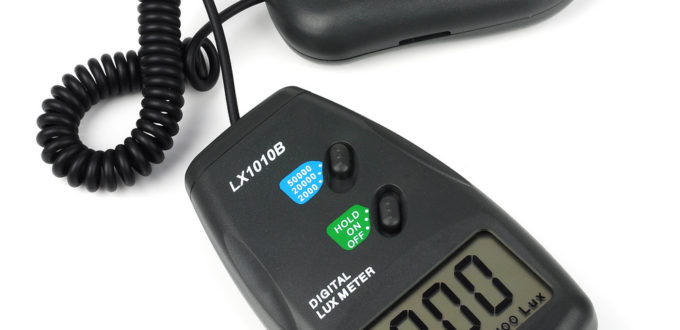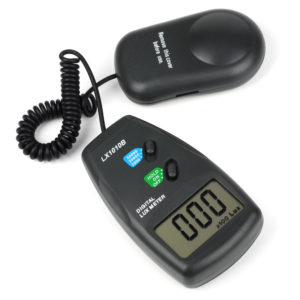Over the last year I’ve been slowly building and outfitting my home workshop. The wiring is now done so it’s time to fit the lighting. My aim for the lighting is to bathe the whole shop in a cool white LED light which is also bright enough for filming. This is the first of a series of articles on my workshop lighting solution and concerns light levels.
Light Levels
The human eye is an amazing piece of equipment, it can provide a high quality image in everything from candle light to full midday sun. Unfortunately for me video cameras aren’t anywhere near as versatile. Technically you can film in very low light conditions but it either requires expensive equipment or acceptance of poor image quality.
Lux and Lumens
Lux (symbol: lx) is the measure of brightness most commonly used and it gives a measure of the luminous flux per unit area. In plain English this means the amount of light falling on the thing you are measuring. The luminous flux is measured in lumens (symbol: lm) and this tells you how much visible light a light source is giving out.
What you need to remember when designing a lighting solution is that lux is a measure of illumination per unit area. Lumens if a measure of light output. What this means in practice is that as you get further from a light source with a fixed lumen output the lux reading will drop. If you have a light source that is spreading it’s light out in every direction, like an old style incandescent light bulb, the lux measurement will drop off with approximately the square of the distance from the bulb! For light fittings that shine only straight down the situation isn’t quite so bad but the lux will still drop off quickly with distance.
Measuring Light Levels
To measure lux you need a light meter. In the past these were expensive professional pieces of kit but now a basic one can be picked up for less than £/$/€15. I got one from eBay that looks this:
Obviously don’t go expecting your cheap and cheerful light meter to be super accurate. What I suggest you do is film test sequences in different lighting conditions and note the measured light levels. That way you have a reference for how your camera responds to different lighting conditions.
What Light Level Should I Aim For?
Standing outside in the sun will easily get you a reading of 50,000 lux and perhaps 100,000 in a sunny country. Standing in the shade you could expect readings of 10,000 to 20,000 lux. This sort of lighting level makes filming easy but it’s well outside the reach of an area lighting system (it would be possible with task lighting though).
A heavily overcast day is about 1000 lux and is what is typical for studio lighting. With modern equipment it should be possible to get away with somewhere between 500 and 750 lux but this should be considered the minimum for filming.
The camera I use, a Panasonic HC750EB-K, claims a typical illumination for filming of 1400 lux but it will go down as low as 1 lux. I have noticed though that as the light levels drop the image quality drops quite quickly and noise starts to appear in the picture. From the filming I’ve already done in dark and dingy workshops I’ve found that I can get a usable image at 250 lux. By roughly 500 lux the image is acceptable and 750 gives some breathing room and is a good level of illumination to aim for. Having more than the bare minimum illumination is useful because lux readings can vary dramatically with even the slightest shade.
Conclusion
When you consider that a heavily overcast day is 1000 lux and most people would say that’s fairly dull it sounds like hitting the 500 to 750 lux range should be easily achievable. From a couple of quick experiments though I’ve discovered that it will be a bit of a challenge. Illuminating a small target area at 750 or even 1000 lux is easy, illuminating a whole workshop at that level is not so easy simply because of how fast the lux drops off with distance.
For reference I’m looking at achieving 750 lux over the whole of the top of my workbench at a minimum and the rest of the shop if possible. Most of the rest of the equipment could have additional task lighting if needed.
Additional Reading
- About lux – http://www.videomaker.com/
- Lux – https://en.wikipedia.org/wiki/Lux
- Lumen – https://en.wikipedia.org/wiki/Lumen_(unit)

